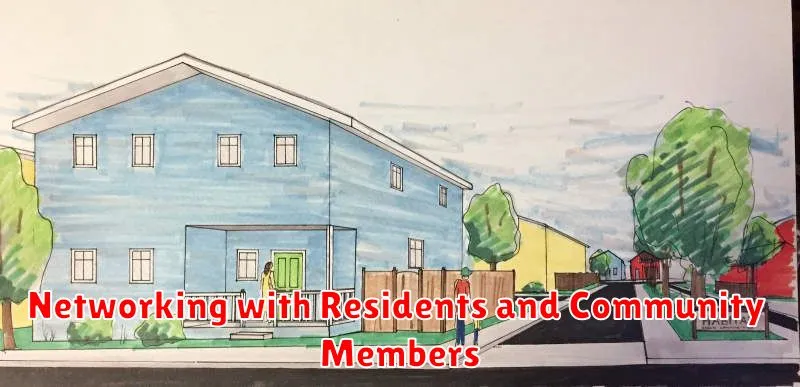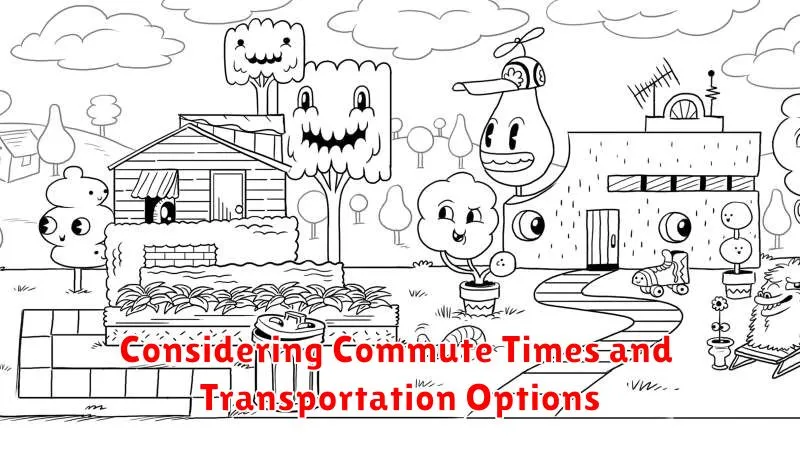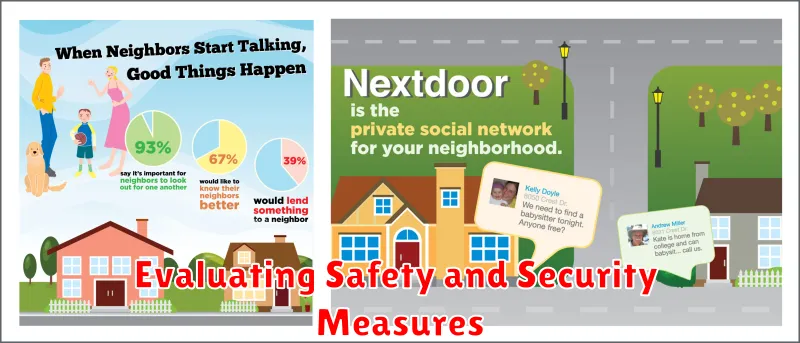Finding the perfect apartment in your dream neighborhood can be a daunting task. With so many factors to consider, it’s easy to feel overwhelmed. But don’t worry, we’re here to guide you through the process. In this article, we’ll discuss all the essential steps to finding your dream apartment, including setting a budget, defining your needs, researching neighborhoods, and navigating the rental market. Whether you’re a first-time renter or looking for an upgrade, we’ll provide you with the tools and knowledge to make informed decisions and secure the perfect living space.
Defining Your Ideal Neighborhood and Lifestyle
Before you start your apartment search, it’s essential to define your ideal neighborhood and lifestyle. This will help you narrow down your options and find an apartment that truly fits your needs. Consider these factors:
Accessibility: Think about your daily commute, access to public transportation, proximity to work, and how easy it is to get around. Are you willing to walk, bike, or drive? Do you need easy access to highways or airports?
Amenities: What amenities are important to you? Do you need a gym, a pool, laundry facilities, parking, or a community garden? Are you looking for a pet-friendly apartment?
Lifestyle: What kind of lifestyle do you envision? Do you want to live in a vibrant, bustling area with plenty of restaurants, bars, and shops? Or would you prefer a quieter, more residential neighborhood with parks and green spaces?
Budget: Set a realistic budget for your rent and consider additional expenses like utilities, internet, and parking. Be aware of the average rental prices in your desired neighborhood.
Safety: It’s essential to consider the safety of your neighborhood. Research crime rates, look for well-lit streets, and consider the overall feel of the area.
By carefully considering these factors, you’ll be able to narrow down your search and find the perfect apartment that meets your needs and fits your desired lifestyle.
Researching Neighborhoods and Amenities
Once you’ve narrowed down your search to a few potential neighborhoods, it’s time to do some in-depth research. This will help you get a feel for the area and ensure it aligns with your lifestyle and preferences.
Start by exploring online resources like neighborhood websites, local blogs, and community forums. These platforms often provide insights into the area’s vibe, demographics, and local events. You can also check out crime statistics and school ratings on websites like NeighborhoodScout or AreaVibes.
Consider visiting the neighborhoods in person during different times of day and week to get a sense of the atmosphere. Observe the foot traffic, noise levels, and overall cleanliness. If possible, chat with local residents to get their perspectives on the neighborhood.
Don’t forget to factor in the availability of essential amenities like grocery stores, restaurants, parks, and public transportation. If you enjoy a specific type of cuisine or activity, make sure your chosen neighborhood has options that suit your needs.
Ultimately, your ideal neighborhood is one that feels safe, comfortable, and aligns with your lifestyle. By conducting thorough research and exploring different areas, you’ll be well on your way to finding the perfect apartment in your dream neighborhood.
Setting a Realistic Budget for Your Dream Location
When you have a dream location in mind, it’s easy to get caught up in the excitement and envision yourself living in a luxurious apartment with all the bells and whistles. However, it’s crucial to set a realistic budget before you start your apartment hunt. This will help you avoid disappointment and ensure you find a place that fits your financial situation.
Start by considering your overall financial obligations, including your income, debt payments, and other expenses. A good rule of thumb is to allocate no more than 30% of your gross income towards housing costs, including rent, utilities, and insurance.
Once you have a clear understanding of your budget, you can start exploring different neighborhoods within your dream location. Remember, the closer you are to the heart of the neighborhood, the higher the rent is likely to be. Consider compromising on some amenities or location if it means staying within your budget.
Don’t forget to factor in hidden costs like moving expenses, security deposits, and renter’s insurance. These costs can quickly add up, so make sure to account for them in your budget.
Setting a realistic budget is a crucial step in finding the perfect apartment in your dream neighborhood. By doing so, you can avoid overspending and secure a place that you can truly afford. Remember to be flexible and open to compromise, and you’ll be well on your way to finding your dream apartment.
Utilizing Online Apartment Search Tools and Resources
Once you’ve pinpointed your dream neighborhood, it’s time to leverage the power of online apartment search tools and resources. These platforms streamline your search, saving you time and effort. Popular websites like Apartments.com, Zillow, Trulia, and Rent.com offer comprehensive listings, allowing you to filter by criteria like price, bedrooms, amenities, and even pet policies.
Take advantage of the advanced features these sites provide. You can often create custom searches, save your favorite listings, and receive email alerts for new properties matching your preferences. Some platforms even integrate with virtual tours, giving you a glimpse inside potential apartments before visiting in person.
Beyond these major players, consider niche websites catering to specific needs, such as Apartments.com for student housing or Rent.com for luxury rentals. Don’t underestimate the value of social media. Groups and forums dedicated to your target neighborhood can provide insights from residents and local experts.
As you explore online listings, pay attention to the details. Photos may not always accurately reflect the condition of the apartment, so inquire about specifics like appliances, flooring, and recent renovations. Be wary of unusually low prices, as they may indicate hidden issues or misleading information. Ultimately, thorough online research paves the way for efficient and effective apartment hunting, setting the stage for finding your perfect home in your dream neighborhood.
Connecting with Local Real Estate Agents
Real estate agents can be invaluable resources when searching for an apartment, especially in a new neighborhood. Local agents possess in-depth knowledge about the area, including available properties, rental prices, and neighborhood amenities. They can provide insights into the local market trends and guide you toward apartments that align with your preferences and budget.
To connect with local real estate agents, consider the following steps:
- Network with people in your desired neighborhood: Ask friends, colleagues, or family members if they have any recommendations for local agents.
- Utilize online real estate platforms: Websites such as Zillow, Trulia, and Redfin allow you to search for agents by location and specialization. Look for agents with a strong track record and positive reviews.
- Attend open houses or community events: These events offer an excellent opportunity to meet local agents and learn about available properties in your target neighborhood.
Once you’ve identified a few potential agents, schedule a meeting to discuss your needs and preferences. A good agent will listen attentively to your requirements and help you find suitable apartments that meet your criteria. They can also handle negotiations with landlords, ensuring a smooth and hassle-free rental process.
Attending Open Houses and Apartment Viewings
Once you’ve narrowed down your search to a few promising neighborhoods, it’s time to start attending open houses and apartment viewings. This is your chance to get a real feel for the properties and see if they meet your needs.
Here are a few tips for making the most of these viewings:
- Go prepared with questions. Think about what’s important to you in an apartment, like the size, layout, amenities, and neighborhood features. Make a list of questions to ask the landlord or agent.
- Take notes on your impressions of each property. This will help you compare them later.
- Don’t be afraid to ask for a second viewing. If you’re unsure about a property, it’s worth taking another look.
- Pay attention to your gut feeling. If you don’t feel comfortable in a property, it’s probably not the right fit for you.
By following these tips, you can make the most of attending open houses and apartment viewings and increase your chances of finding the perfect apartment in your dream neighborhood.
Networking with Residents and Community Members

Once you’ve narrowed down your neighborhood choices, it’s time to get a feel for the community. This can be done by reaching out to current residents. Connect with people on social media groups, attend local events, or even just strike up conversations with people you meet while exploring the area. Ask about their experiences, what they love about the neighborhood, and what they wish was different. These conversations can give you valuable insights into the day-to-day life in the neighborhood, including the local culture, safety, and community feel.
You can also reach out to community organizations. This could include local businesses, community centers, or even neighborhood watch groups. They can provide valuable insights into the neighborhood’s history, current issues, and future plans.
By talking to residents and community members, you’ll gain a much deeper understanding of what it’s truly like to live in the neighborhood. This knowledge will help you make an informed decision about whether it’s the right fit for you.
Considering Commute Times and Transportation Options

Before you fall head over heels for an apartment, consider how you’ll get around. If you’re a car-dependent person, make sure there’s ample parking available. If you plan to rely on public transportation, look into the frequency and reliability of bus, train, or subway lines. If you’re a cyclist, consider bike lanes and the overall safety of the area for biking. Take note of the time it takes to get to work, school, or other important destinations. Also, consider if you’ll be comfortable navigating traffic or waiting for public transportation during peak hours.
Think about the cost of transportation as well. Factor in parking fees, gas, public transportation fares, or the cost of bike maintenance. Don’t forget to factor in the cost of any potential car insurance. You might find that a slightly less expensive apartment in a less desirable area actually ends up costing you more in the long run due to transportation costs.
Once you have a good grasp of the transportation situation, you can factor it into your decision-making process. This will help you make a more informed choice about the perfect apartment for you.
Evaluating Safety and Security Measures

Once you’ve found a neighborhood that ticks all your boxes, it’s time to delve deeper into the specifics of safety and security. You want to feel comfortable and secure in your new home, so don’t shy away from asking important questions.
Start by researching crime statistics. Websites like NeighborhoodScout and CrimeMapping provide valuable insights into crime rates in different areas. Look at the types of crimes reported, their frequency, and any trends you notice. While statistics provide a broad overview, they don’t tell the whole story.
Visit the neighborhood at different times of day and night. Observe the atmosphere, the people you encounter, and the general level of activity. This will give you a more personal feel for the area. Pay attention to street lighting, visibility, and the condition of buildings.
Talk to residents and businesses. Get their perspectives on the neighborhood’s safety and security. Ask about any incidents or concerns they may have. Their firsthand knowledge can be invaluable.
Inspect the potential apartment building. Look for well-lit areas, secure entryways, and working security cameras. Check if there are any safety protocols in place like a resident-only access system or a building manager on duty. Inquire about the building’s security measures and how they are managed.
Trust your instincts. If something doesn’t feel right, don’t ignore it. A good feeling about a neighborhood is crucial for feeling safe and comfortable.
Negotiating Lease Terms and Making an Offer
Once you’ve found an apartment that checks all your boxes, it’s time to negotiate lease terms and make an offer. This is where you can use your research to your advantage. Start by reviewing the lease agreement carefully. Pay attention to the rental amount, lease duration, security deposit, and any pet policies. This is also a good time to negotiate amenities such as parking or laundry access.
It’s important to be prepared to make a counteroffer if the initial terms aren’t agreeable. Be polite and respectful, and be prepared to compromise. If you’re willing to sign a longer lease, you might be able to negotiate a lower rent. Or, if you’re willing to pay a higher deposit, you may be able to waive a pet fee.
When making an offer, be sure to include the following information:
- The monthly rent you are willing to pay
- The length of the lease
- Any other terms you are negotiating, such as parking or pet policies
Once you’ve submitted your offer, be patient while the landlord reviews it. They may come back with a counteroffer, or they may accept your offer as is. If you’re not happy with their response, you can always walk away and continue searching for other apartments.
Preparing for Your Move to Your Dream Neighborhood
Moving to a new neighborhood is an exciting step, especially when it’s your dream neighborhood! Before you start searching for the perfect apartment, there are some important things to prepare for.
First, define your budget. How much can you realistically afford to spend on rent, utilities, and other expenses? Knowing this number will help you narrow down your search and avoid disappointment later on.
Next, consider your lifestyle. What type of neighborhood do you envision yourself living in? Do you want a bustling city center or a quiet suburb? Think about your preferred proximity to amenities like parks, restaurants, and public transportation.
Finally, take the time to research and explore your chosen neighborhood. Visit potential apartment buildings, walk around the streets, and talk to locals to get a feel for the vibe and community. This will help you determine if it’s truly the right fit for you.
By taking these steps to prepare, you’ll be well-equipped to find the perfect apartment in your dream neighborhood.

